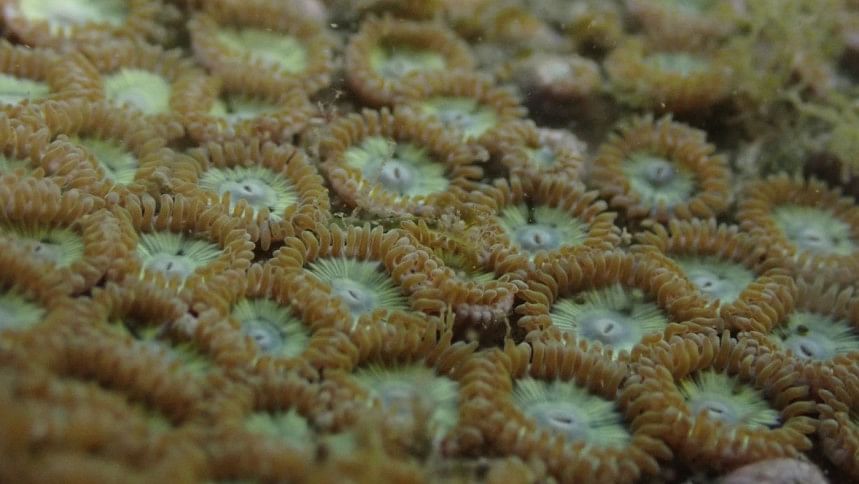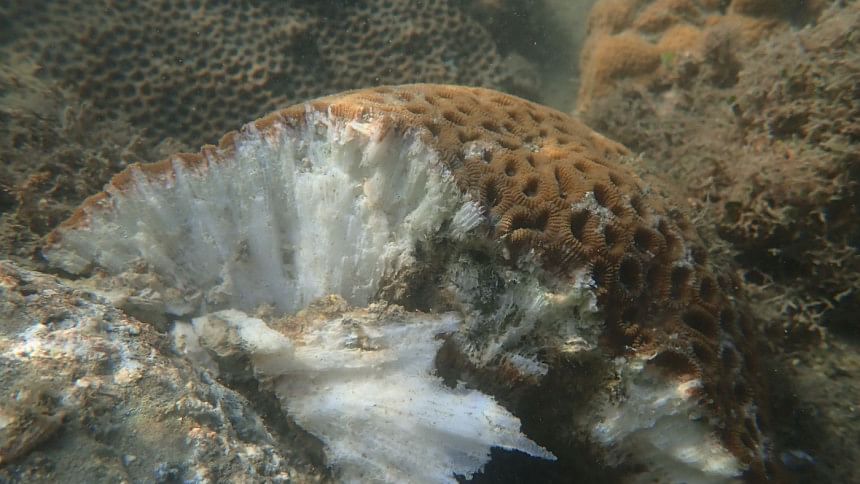Cries of the corals

Different species of corals showing early signs of bleaching – death – in the Bay of Bengal. Coral reefs are some of the largest living structures and diverse ecosystems in the world, so much so that they can be seen from outer space. Imperative to the protection of coastlines, corals provide protection against the damaging effects of wave action, tropical storms and provide habitat to numerous fish species.

As a matter of fact, corals support 25 percent of ocean life globally. Bangladesh's only coral-rich island is Saint Martin's Island, with around 66 different types of corals. However, over 67 percent of it has already been bleached as the island has been on the verge of losing its rich biodiversity for long due to a lack of protective measures.

Furthering the death of corals are over-exploitation, tourist pressure, uncontrolled pollution in the Bay and the biggest threat of all – global warming, as rising surface temperatures contribute to the death of the animal.
Coral reefs are the dominant source of nitrogen and other essential nutrients for marine food chains, which means their deaths can only result in the deaths of many other aquatic species. With coral reefs dying across the world, the IUCN has rightly categorised the animal as "endangered" in its Red List, prompting and urging immediate conservation measures, which can only result in the benefit of the reefs, the oceans, and the environment as a whole.

 For all latest news, follow The Daily Star's Google News channel.
For all latest news, follow The Daily Star's Google News channel. 



Comments